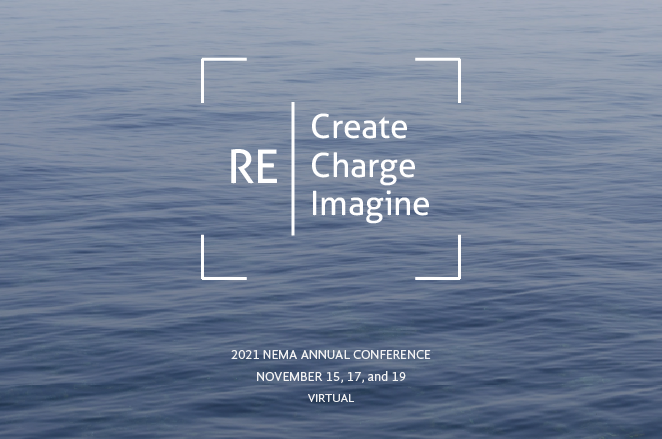What is a Vision Statement? Why Nonprofits Need Them
Does your organization have a vision statement or vision in mind? One of the greatest dangers facing nonprofits is not economic, generational, or even legal…it’s the gradual drift into complacency. The work becomes a collection of tasks rather than a force for good. It’s the same for any industry or profession, but in the field of cause work, the risk and potential loss are significant because the risk is shared not only by the organization’s team but by the community they serve. So, how do we maintain the vision? In the midst of change and pressure, how do we ensure our team is all sharing the same vision?
Do You Really Need to Hold That Meeting?
Meetings have many benefits, offering the opportunity for real-time communication and the ability to hear tone of voice and observe body language. They’re also a great way to interact with your colleagues, fostering positive relationships and helping employees get to know each other more personally. But meetings can also consume our valuable time and make calendar management unduly difficult. The following guidelines and considerations are designed to improve meeting efficiency and potentially reduce their number.
Backlash, Burnout, and POC Leaders
Unlike the vaunted conversations about leading organizations toward racial equity, white backlash—the hostile reactions of white people to that very possibility—often goes unnamed. So does its human impact: racial burnout. Both backlash and burnout thrive without language to expose and examine them; but once they are called out into the open, leaders can strengthen themselves and each other.
Boston PomPod: A Virtual Co-working Experiment
Nobody wants more “Zoom fatigue” or waste-of-time meetings on their calendar. People blame the technology, but the problems with attempts at virtual gathering are so rarely about the technology. I believe a version of teleportation is available to us via video conferencing—we are just in the baby stages of learning to use it.
Facilitating (and Leading) “From the Chair”
How can we keep things rolling when we aren’t formally in charge and when formal leadership is perhaps not so skillful? My answer: There’s usually some opportunity to lead, ask good questions, and to facilitate from the chair!
Here’s How Users Engaged with Social Media (and Social Audio) in 2021
Social media, which was increasingly becoming part of museums’ digital strategies pre-pandemic, had quite its moment last year. In between the Black Country Living Museum’s elaborate TikTok videos and the Cowboy Museum’s clever tapping of staff expertise, cultural organizations found a multitude of ways to keep audience engagement going on these apps despite global lockdowns. But who uses these platforms, and how? The Pew Research Center, in a new report, finds out.

Photo credit: Micheile Henderson on Unsplash
What’s the Connection Between Financial Capital and Museum Education
As museum staff, our institutions’ financial health and finances can feel foreign and complicated, but it does not have to be this way. With this piece, we hope to introduce you to some terms and questions around your museum’s financial capital, give you prompts to support your journey of understanding and examining your museum’s financial strengths and weaknesses, and provide case studies on how an institution’s financial health impacts museum educational missions. We hope to build your power and influence so you, too, can make significant contributions and choices for museums and guests. No longer is the day that we are not all responsible for our institution’s finances, and in the words of Dennis Wint, “No margin, no mission.” Let’s go forth and learn.
History Museums Are Vibrant Civic Spaces
In late May the New York Times published its biannual Special Section on Museums, a full-color insert arriving with the Sunday paper: 30 pages, 19 articles, dozens and dozens of museums mentioned by name. And one—only one—was a history museum. This isn’t new; art museums have long dominated the Times and media coverage of museums overall, to the extent that “museums” seems to be synonymous with “art museums.” But given the reach, impact, and civic value of history museums, which represent over 50 percent of the museums in the country according to tallies by the American Association of State and Local History, it’s a view that’s so narrow as to be misleading.
The Fact-Based Fallacy of Accountability to Donors
One of Hildy Gottlieb favorite questions to ask board members is this one: “To whom is your organization primarily accountable?” With rare exception, a sizable portion respond almost reflexively: “Our funders/donors.” When thy ask the follow-up question, “What about the community you serve? Are you not primarily accountable to them?” they generally think for a moment. They discuss. And they invariably come up with, “Well yes, the community. So Hildy guesses it’s both – the community and our funders.”
Refocusing Museums on People: my dreams for museums in a post-COVID world
As I watch museums lay off thousands of highly qualified underpaid staff during this pandemic, I have been asking myself why I keep investing in museums. Museum staff are overwhelmingly white, straight, and able-bodied, and museum leaders are overwhelmingly male. For centuries museums have told stories about a diversity of people, presenting these stories from the perspective of those in power. Thereby, museums have bolstered white supremacy, sexism, colonialism, ableism, heteronormativity, and a lot of other icky isms. The pandemic layoffs are only exacerbating this situation.
Practical Guide to How Nonprofits Can Create Equity in Organizations and Community
The way to address structural racism across institutions and policies is to do a systems analysis, which requires us to analyze the problem holistically to identify not just the racial disparities themselves, but the roots of those disparities. There are many ways to do a systems analysis, but in general this type of analysis asks the following questions:
*What are the racial inequities? Who’s harmed and who benefits?
*What institutions and unfair policies or practices are involved?
*What are popular ideas, myths, or norms that reinforce the problem?
How Relaxed Mask Policies Are Impacting Family Plans to Visit Cultural Entities
Parents of young children generally still prefer mask mandates, and changes in masking policies are impacting their intentions to visit cultural entities. Since most governments have removed mask mandates for vaccinated individuals, museums and performing arts entities have been in an increasingly tough spot. Audiences have been divided: desires for mask requirements remain generally unchanged for people with children under 13 in the household, while desires to ditch the masks rapidly increase for others.
